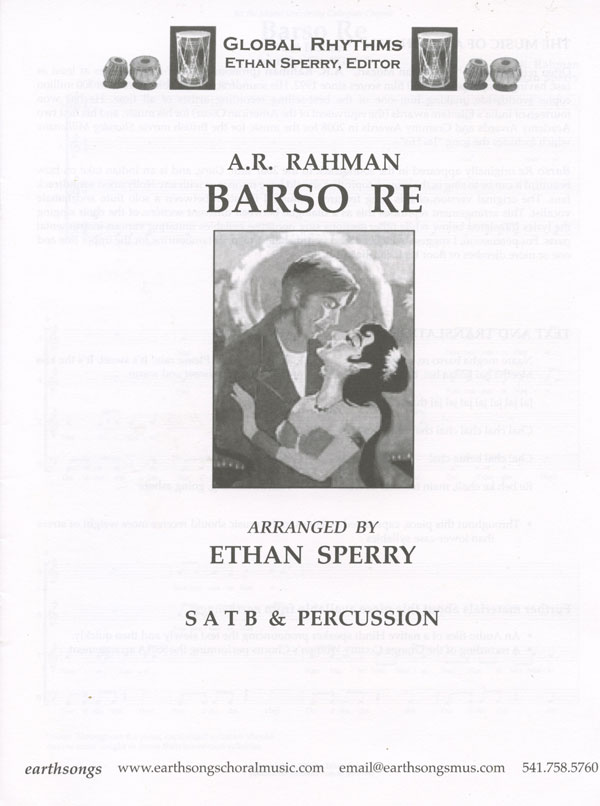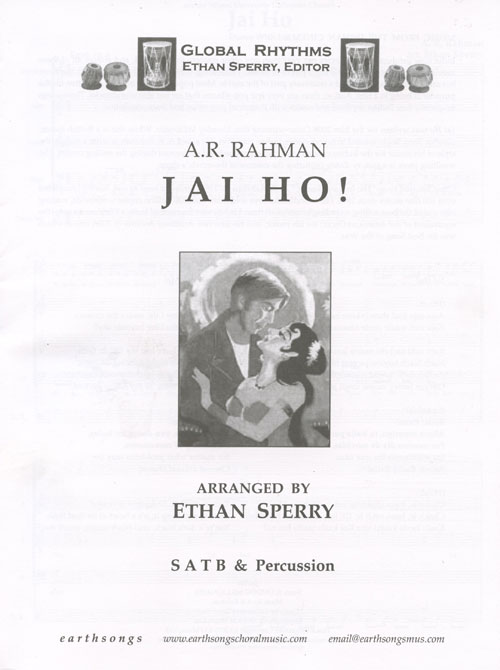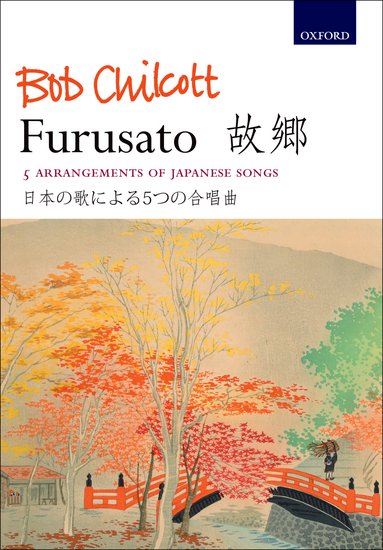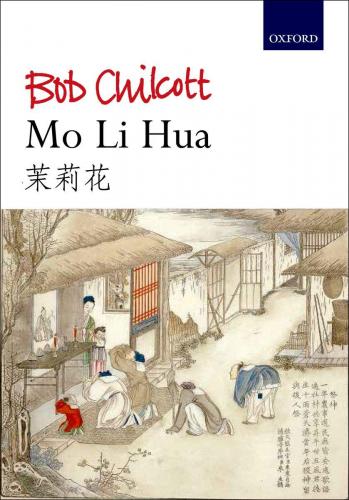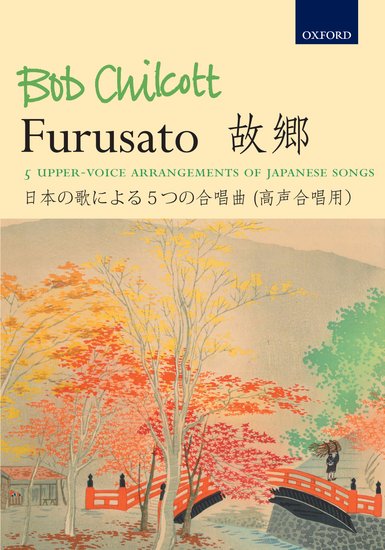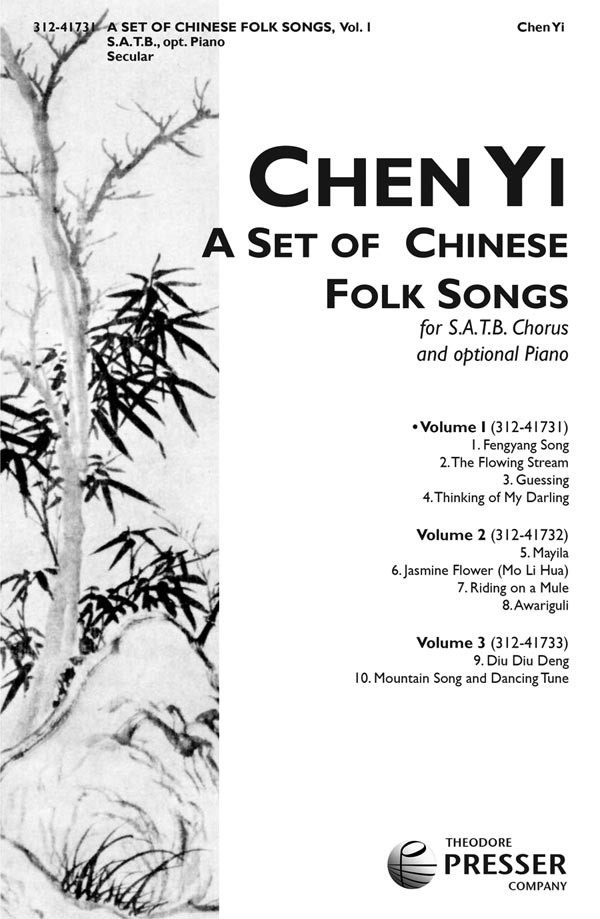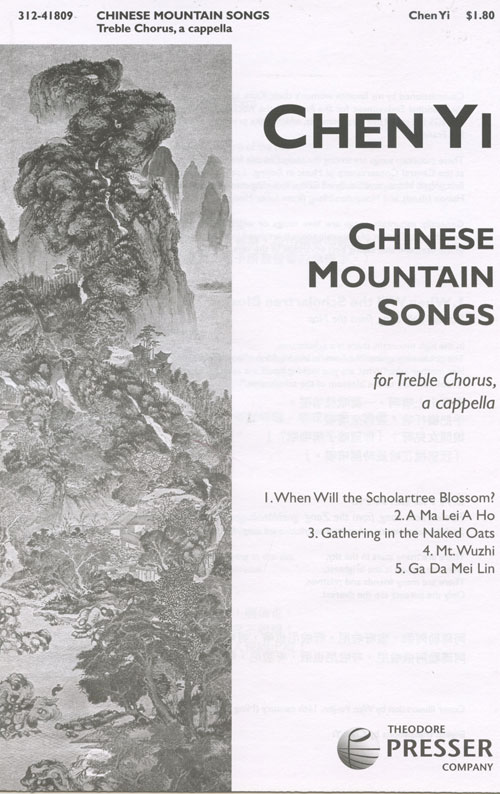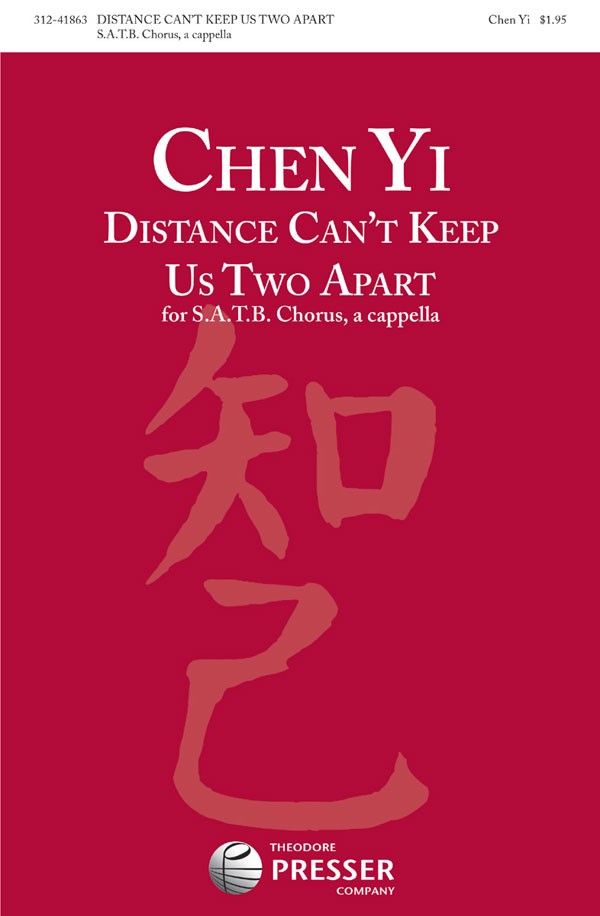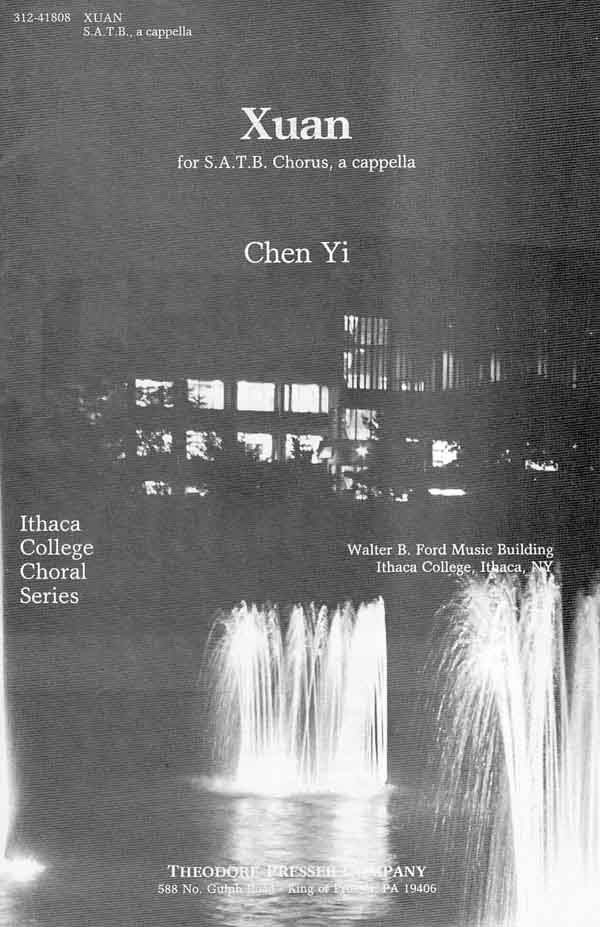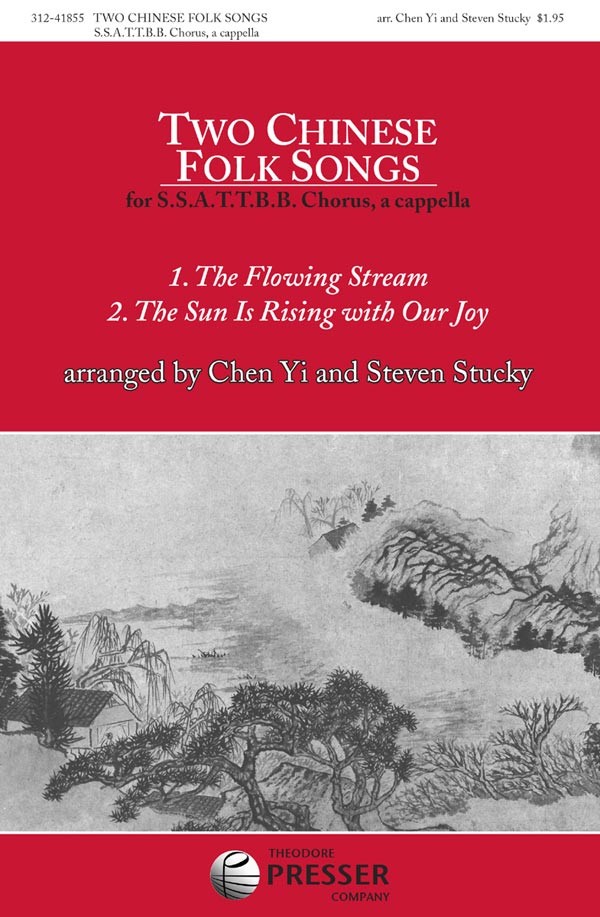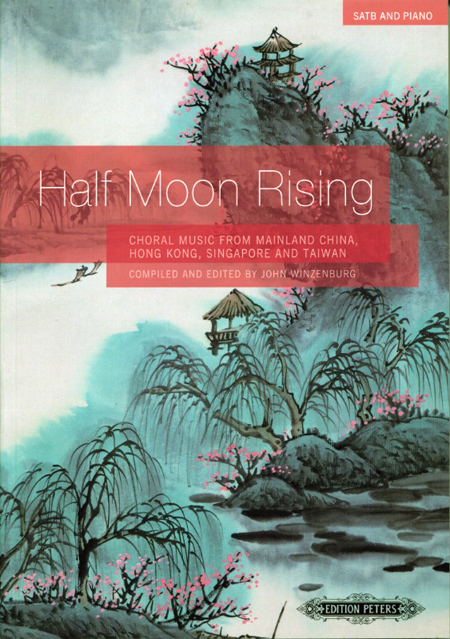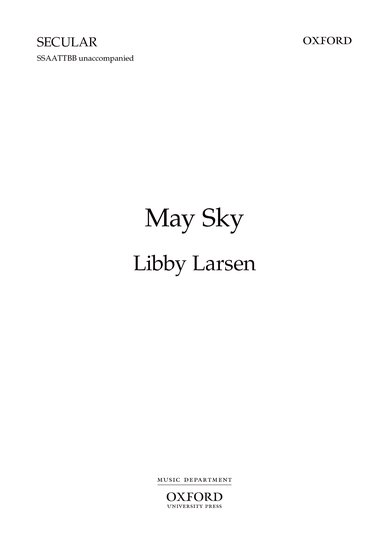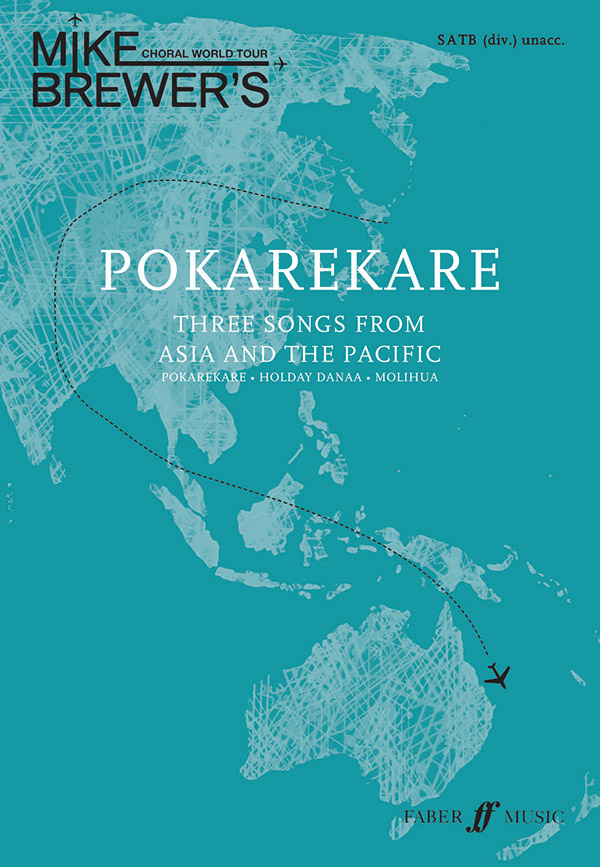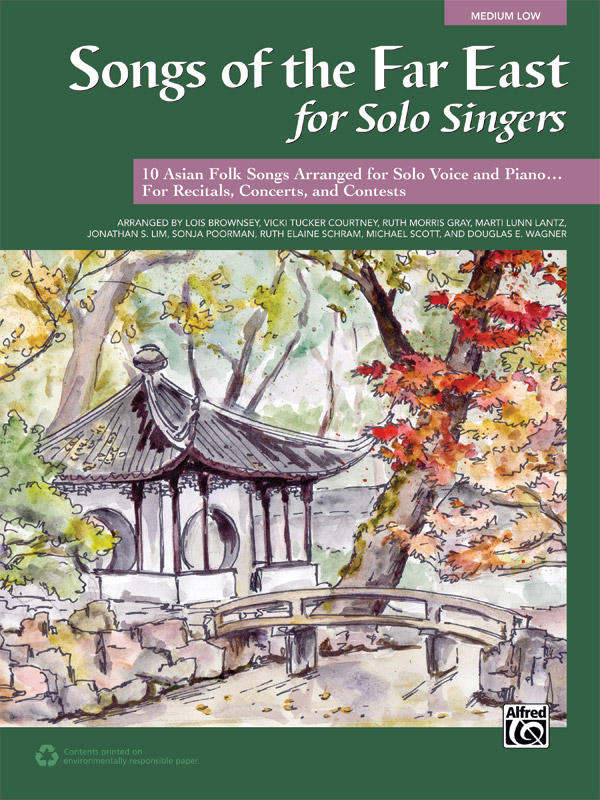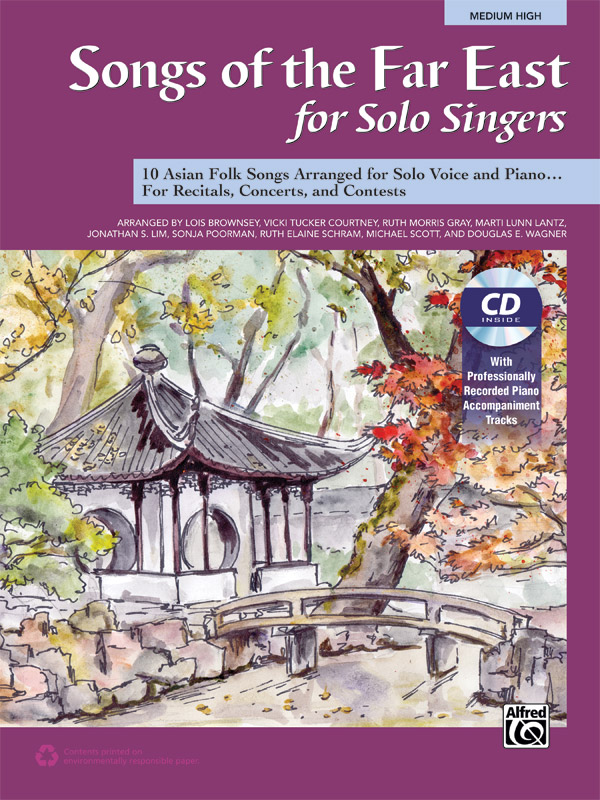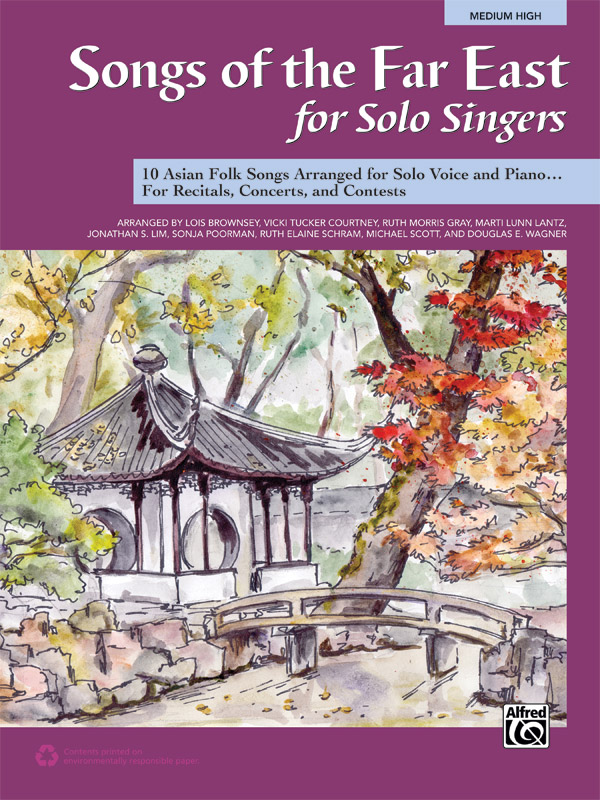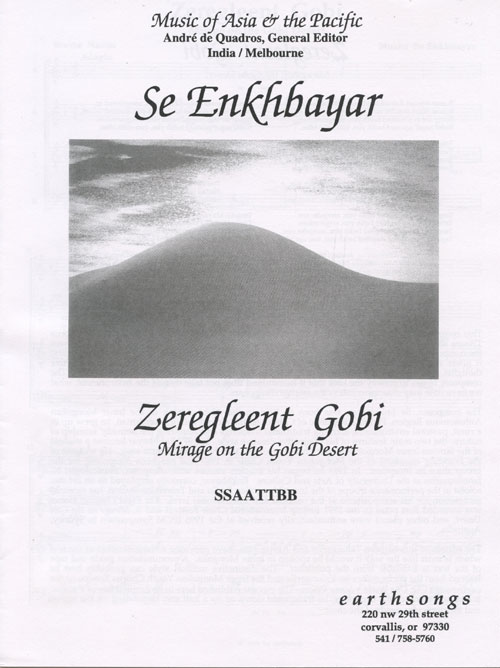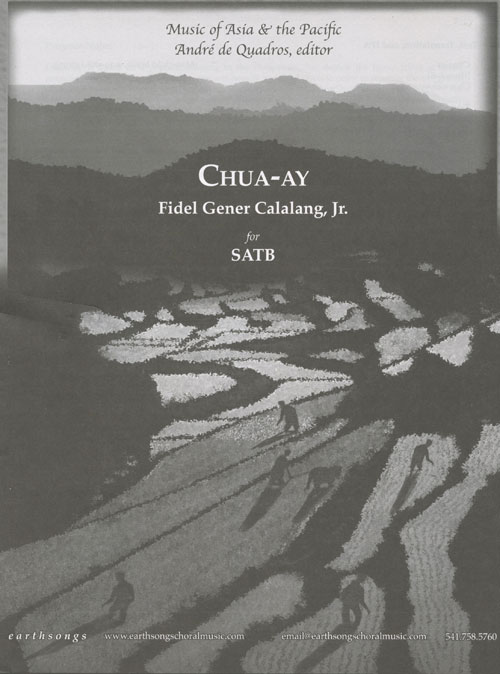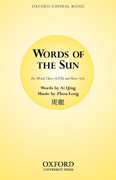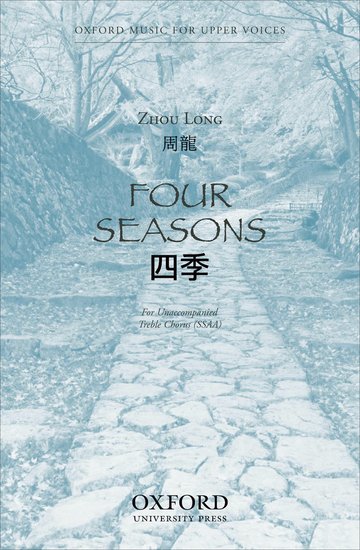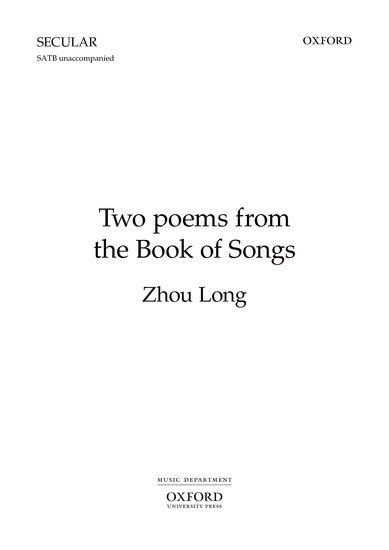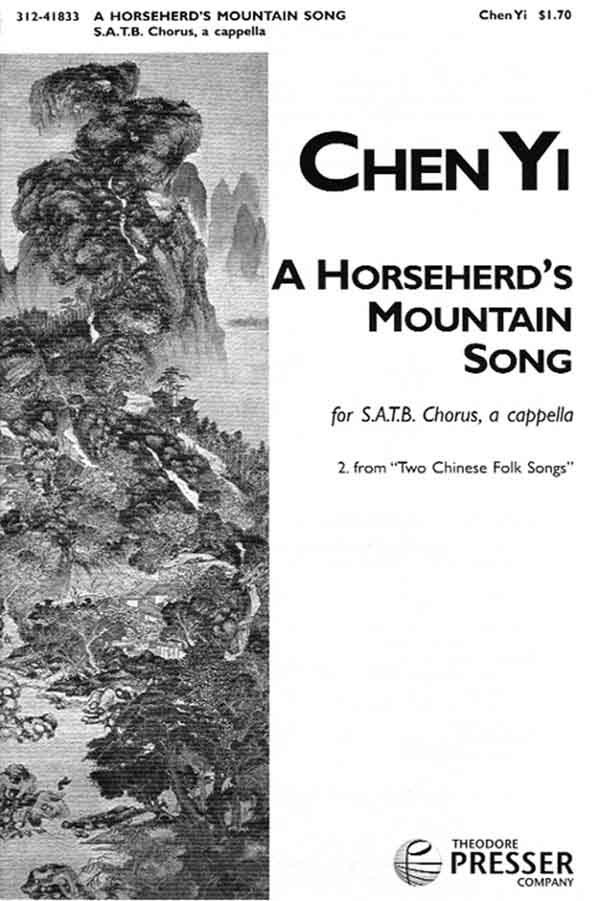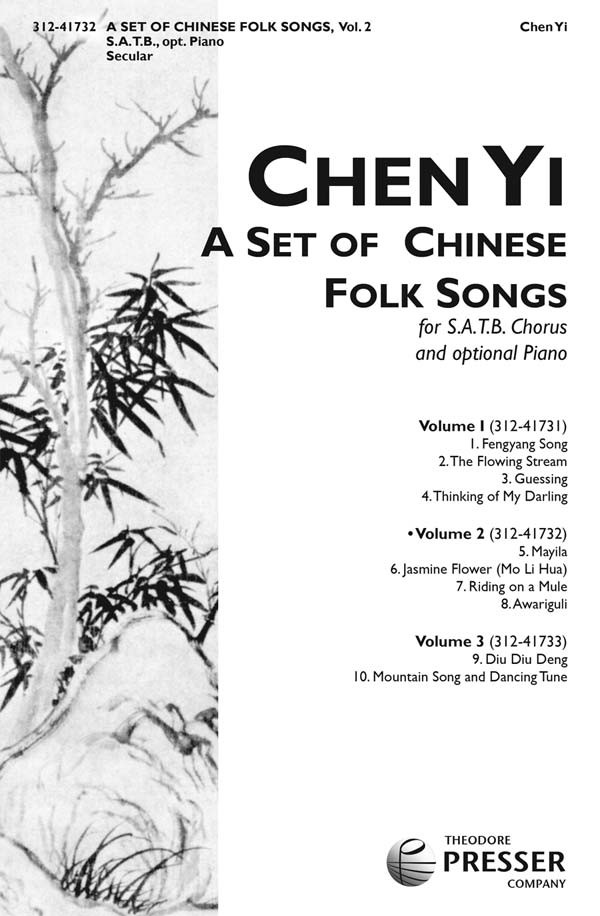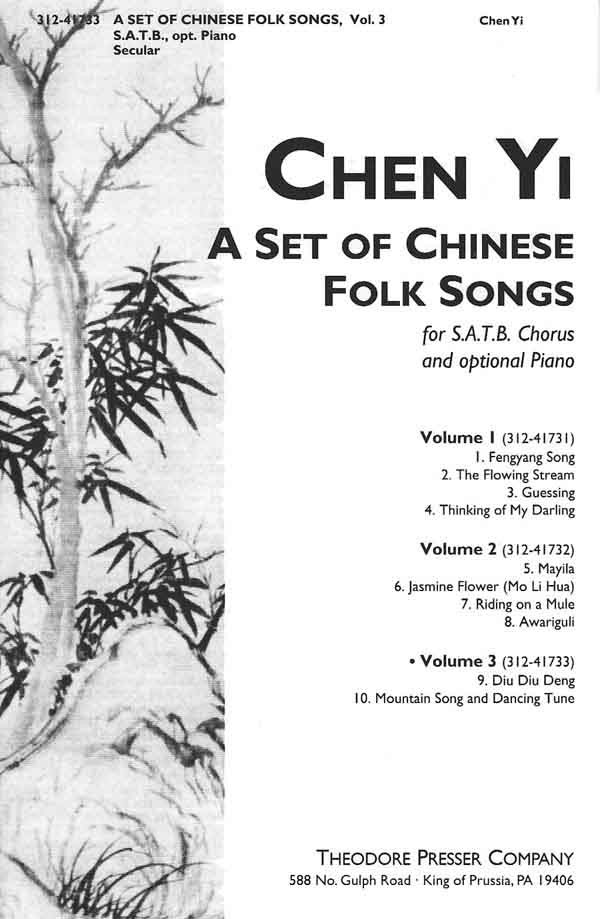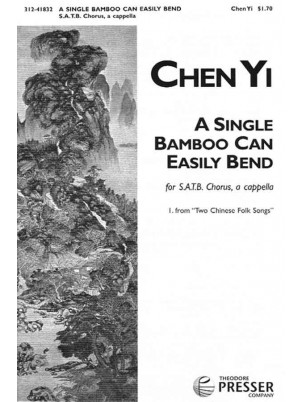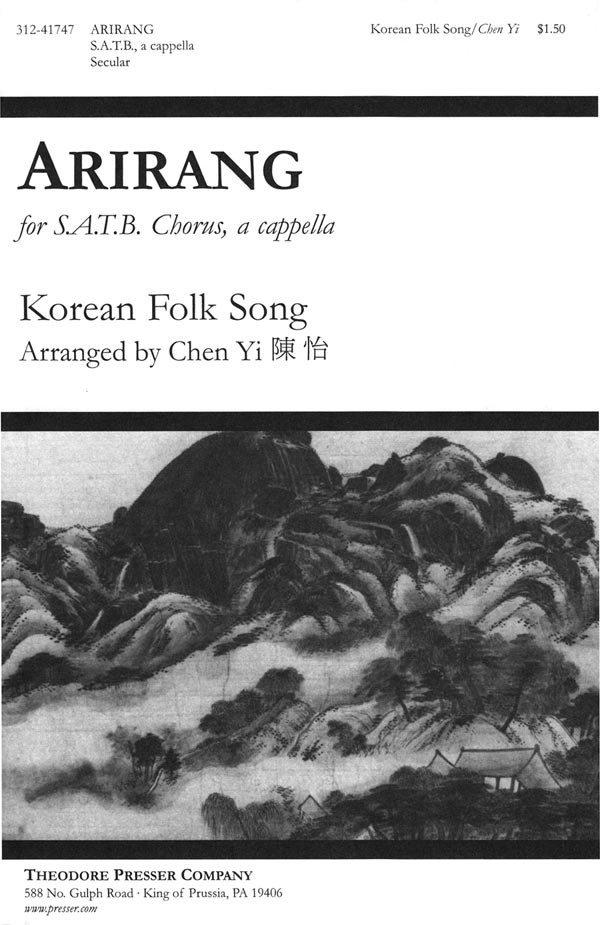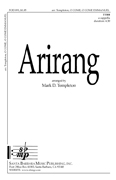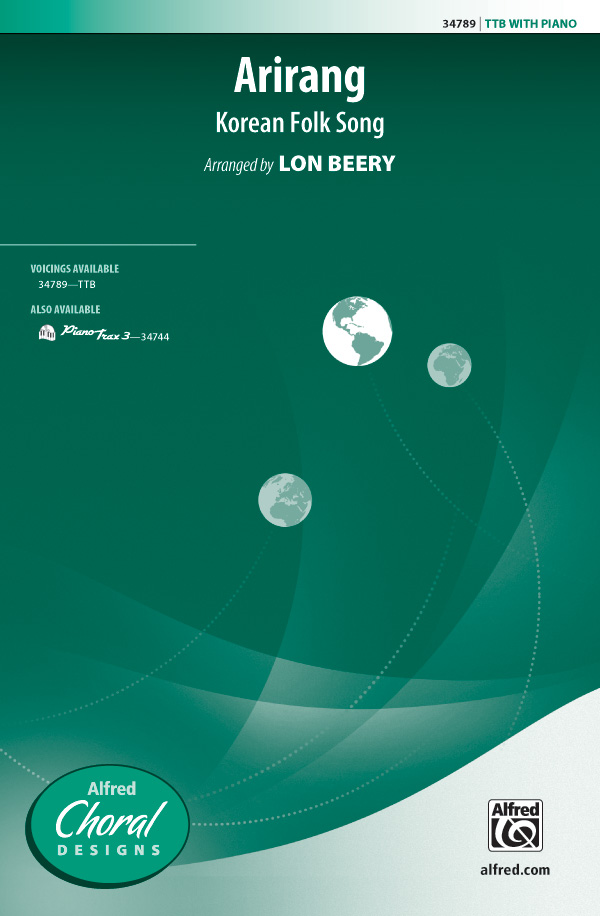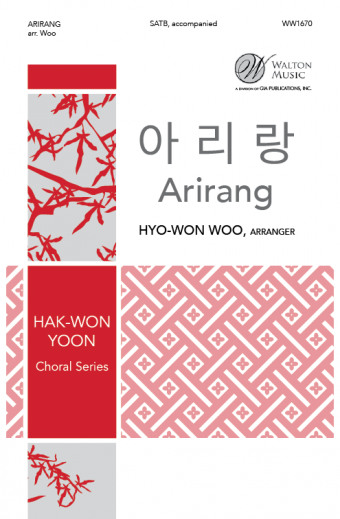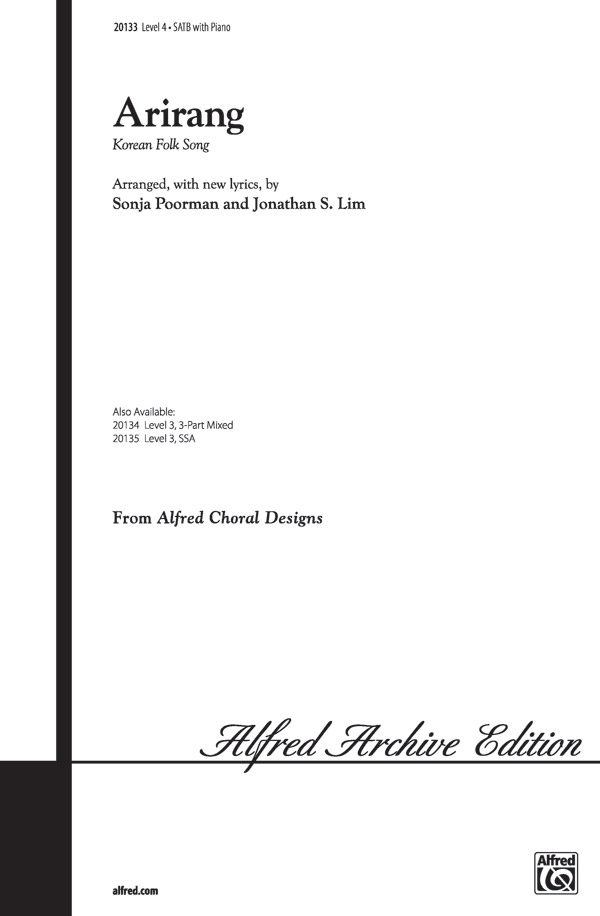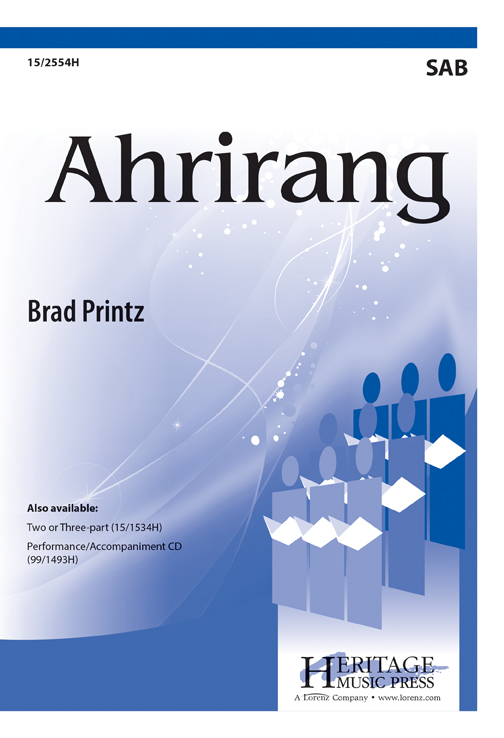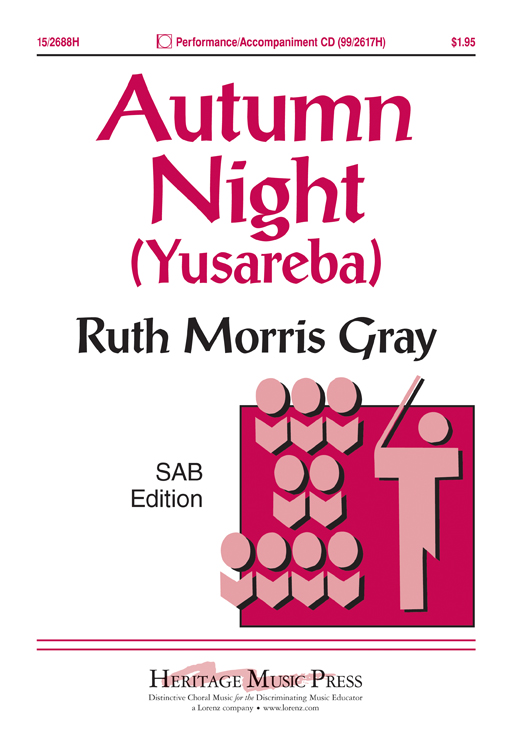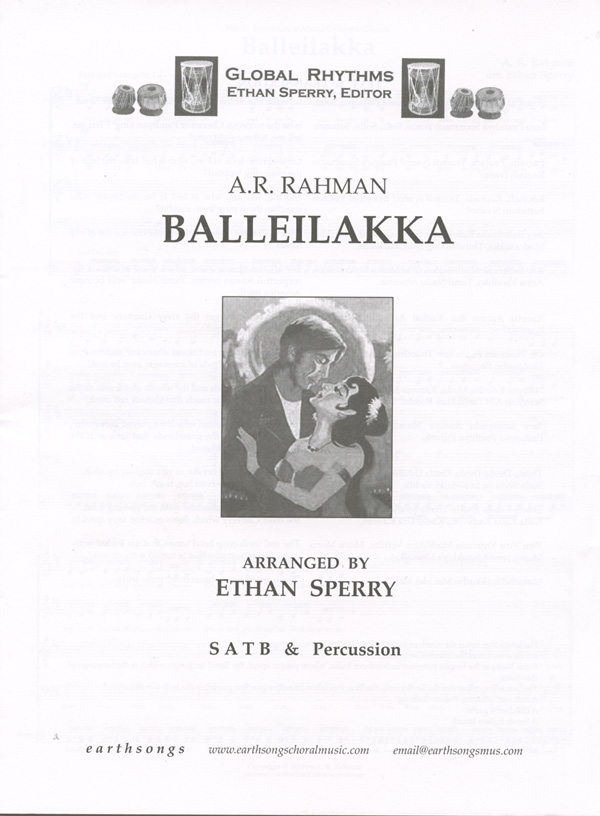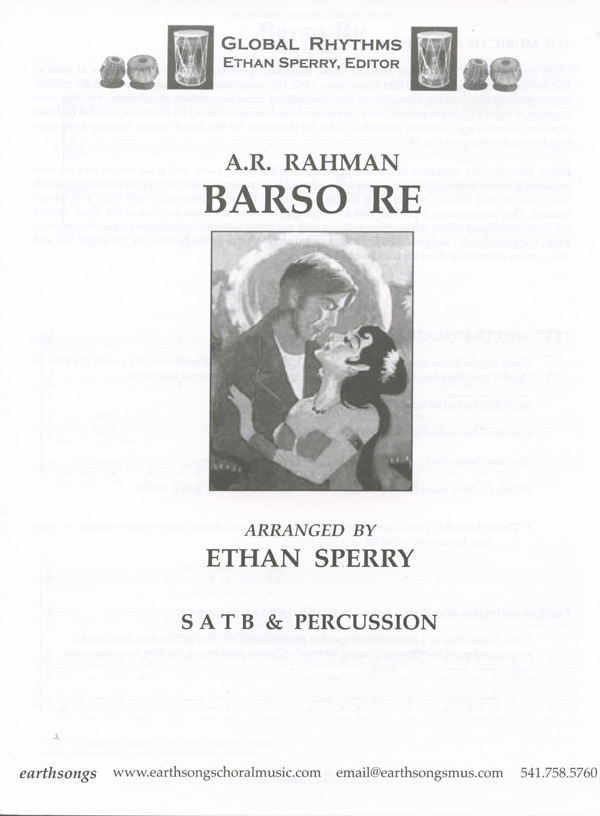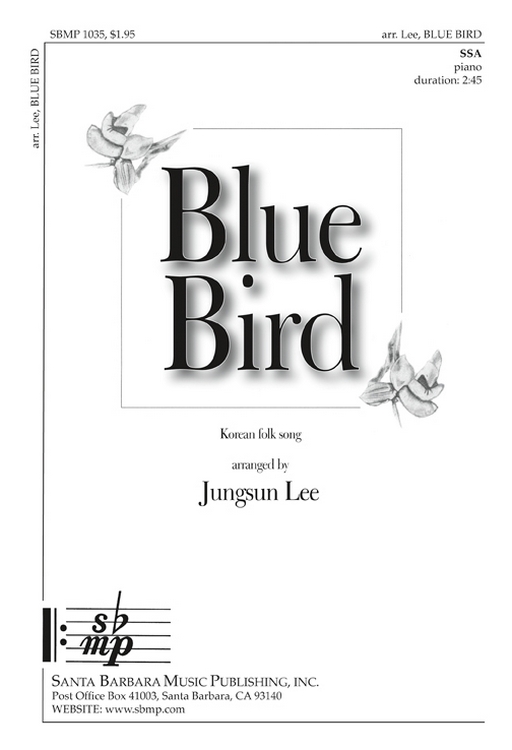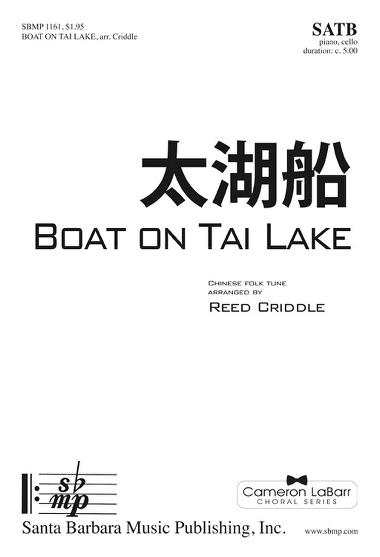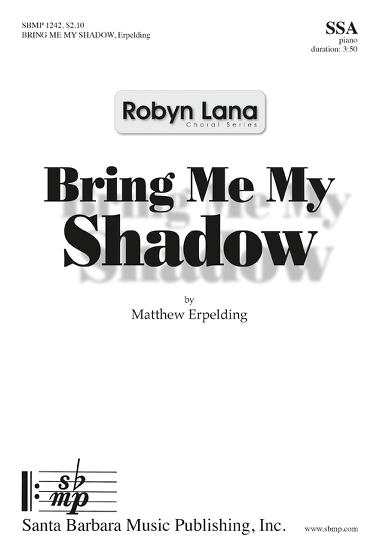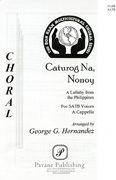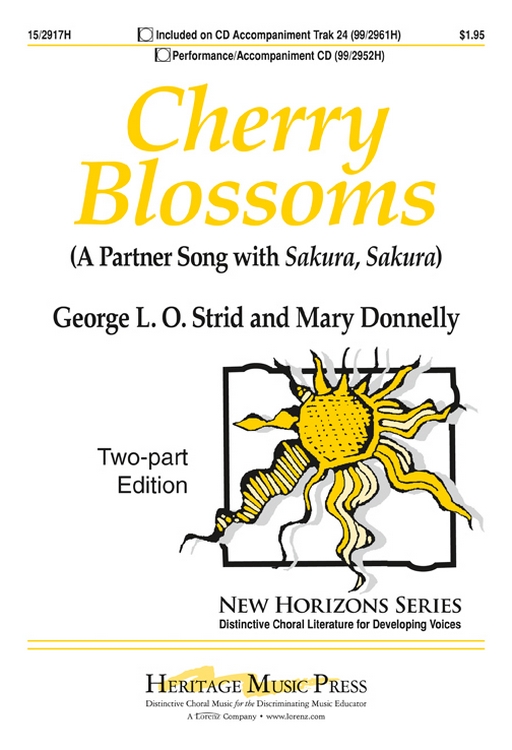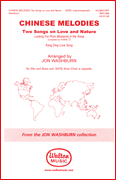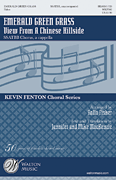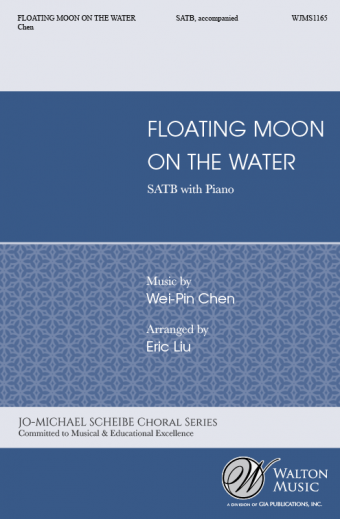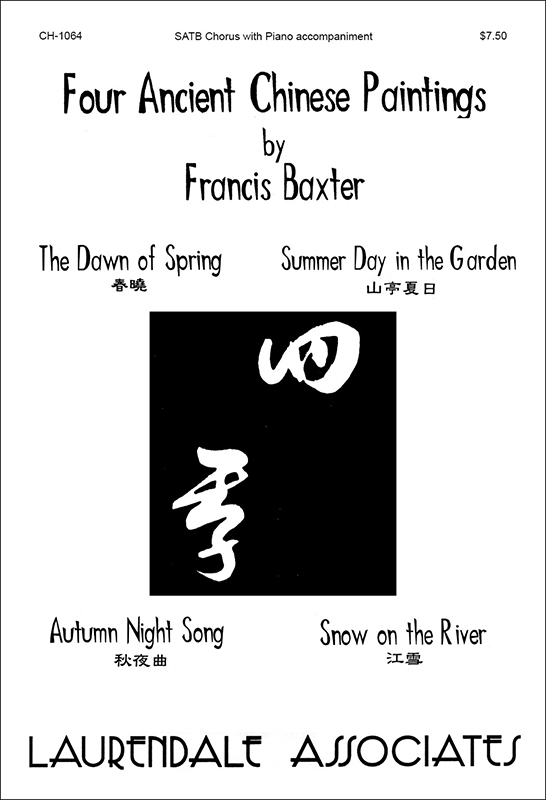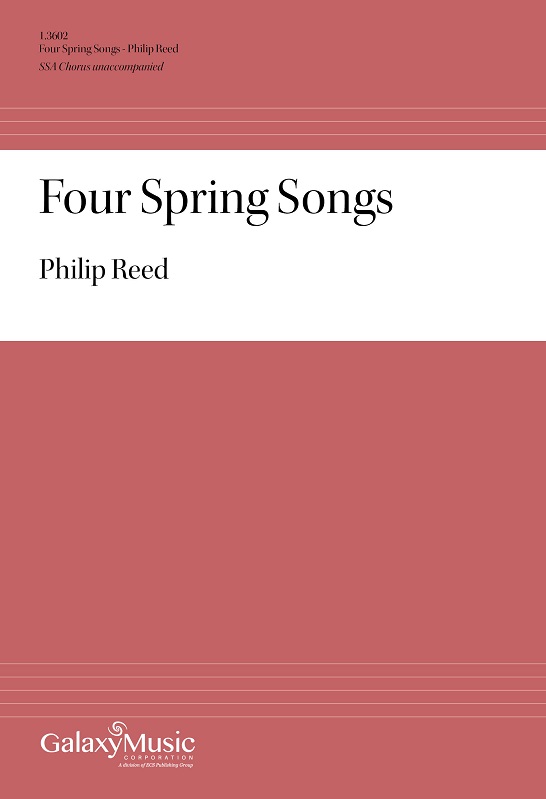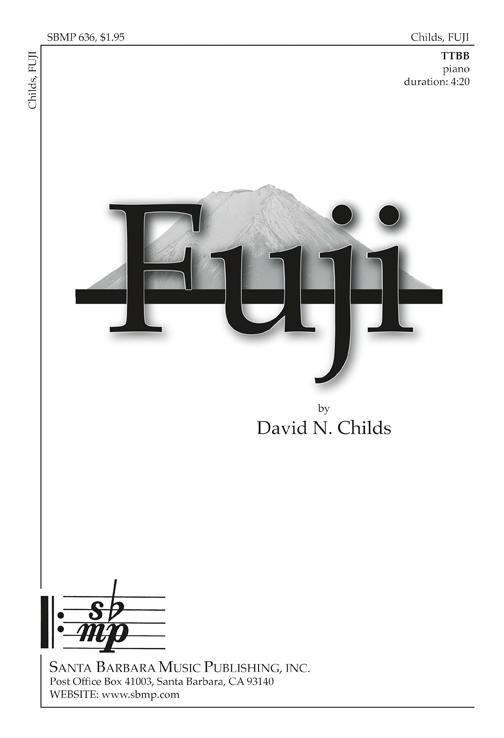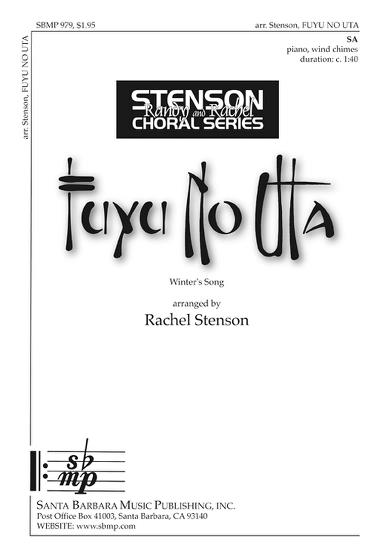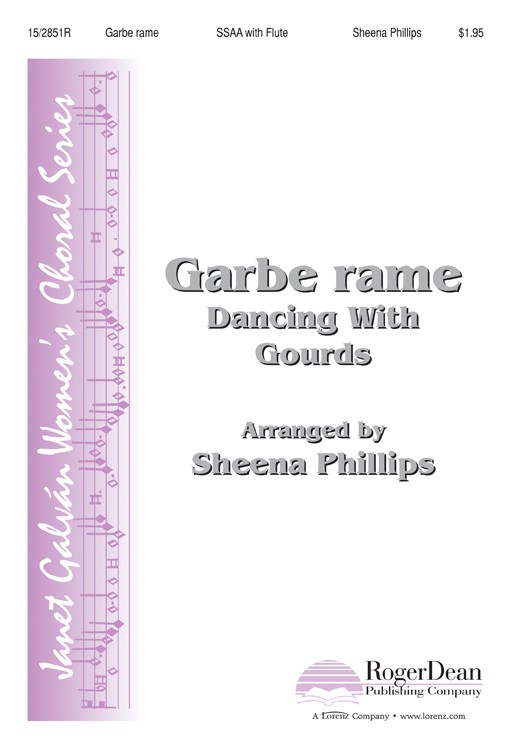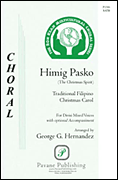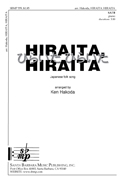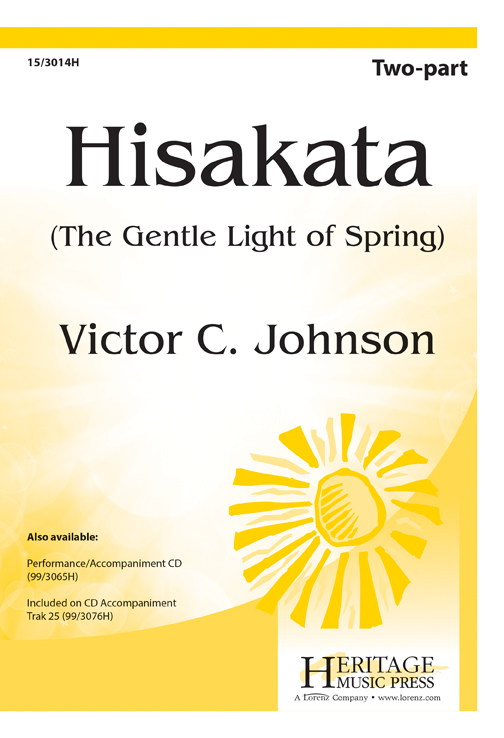In Celebration of the Human Voice - The Essential Musical Instrument
Home | Doo Wop | Barbershop | World | Contemporary | Christian | Vocal Jazz | Choral | Christmas | Instructional | Arrangements
Classical | Opera | Musicals | Personality | Young Singers | Disney | Videos | Songs | The Artists

All | Africa | Asia | Baltics | British Isles | Caribbean | Eastern Europe | French | German | Latin America | Middle East | North America | Northern Europe | Russian | Scandinavia | South Seas | Southern Europe
Asian Choral Music Arrangements
| A collection of traditional Asian choral music arranged for harmony voices |
![]() Arrangements from Asia - Asia | China | India | Japan | Korea | Pakistan | Thailand | The Philippines
Arrangements from Asia - Asia | China | India | Japan | Korea | Pakistan | Thailand | The Philippines
Songbooks, Arrangements and/or Media
Displaying 1-29 of 29 items.
A.R. Rahman : Barso Re Barso Re, written by A. R. Rahman and arranged for choir by Ethan Sperry, appeared in the soundtrack of the 2007 film Guru. It is an Indian take on how beautiful it can be to sing in the rain. For percussion, use a beaded gourd shaker, rasp, or tambourine for the upper line and one or more djembes or floor toms for the lower line. A.R. Rahman : Music From the Indian Cinema Jai Ho was written for the 2008 Oscar winning film Slumdog Millionaire. While this is a British movie, director Tony Boyle wanted to acknowledge Indian tradition. He asked A.R. Rahman to write a song in the style of his music for the Indian cinema to be choreographed and performed during the ending credits. The resulting piece is a victory dance capturing the essence of the movie's story. Balleilakka is a song from the Tamil film Sivaji, which means "The Boss." The text of this piece is a tongue-twister lamenting how traditional Indian culture is being subsumed and listing the speaker's memories of his homeland in increasingly faster syllabic patterns. O Saya was written for the Oscar winning film Slumdog Millionaire. The song appears at the beginning as we are introduced to just how horrible living conditions are int he slums of India. The lyrics have no meaning, nor does the title. They are just nonsense syllables that form a wail. The melodic patterns are based loosely on the patterns one might hear in the slums as the Muslim call to worship blasts from the minarets, but they are more a call to action than a call to prayer. When people sing this piece, hopefully they will consider taking some action against poverty themselves. Barso Re, written by A. R. Rahman and arranged for choir by Ethan Sperry, appeared in the soundtrack of the 2007 film Guru. It is an Indian take on how beautiful it can be to sing in the rain. For percussion, use a beaded gourd shaker, rasp, or tambourine for the upper line and one or more djembes or floor toms for the lower line. Songlist: Jai Ho!, Balleilakka, O Saya, Zikr, Barso Re Bob Chilcott : Furusato Furusato presents five evocative arrangements of Japanese songs. Each poem depicts the beauty of the Japanese landscape, and familiar melodies and Chilcott's original style combine to create an enchanting fusion of East and West. Suitable for performance as a suite or as stand-alone pieces, these charming and emotive songs will be a welcome addition to the repertoire of any choir. Songlist: Sunayama, Mura Matsuri, Oborozukiyo, Furusato, Momiji Bob Chilcott : Mo Li Hua (Jasmine Flower) Mo li hua (Jasmine) is a tri-language publication suitable for Chinese - or English-speaking choirs. A collection of arrangements of five well-known traditional Chinese songs depicting the simplicity and beauty of everyday life, it includes simplified and traditional Chinese scripts, as well as English singing translations. A Pinyin version of the Chinese - for non-Chinese reading choirs - will be available from the OUP website.The songs-drawn from across China-are arranged sympathetically and in Chilcott's original style, suggesting a musical fusion of East and West. The song 'Mo li hua' was written for The Bach Choir and David Hill, who gave its premiere while on tour in China in April 2014. Songlist: My Flower, Shepherd's Song, Sun is Out, In Sichuan, Mo Li Hua Bob Chilcott : Furusato - 5 upper-voice arrangements of Japanese songs Following the success of the mixed-voice edition of Furusato, Bob Chilcott has adapted his arrangements of five evocative Japanese songs for upper voices. Each poem depicts the beauty of the Japanese landscape, and familiar melodies combine with Chilcott's original style to create an enchanting fusion of East and West. Suitable for performance as a suite or as stand-alone pieces, these charming and emotive songs will be a welcome addition to the repertoire of any upper-voice choir. Songlist: Sunayama, Mura Matsuri, Oborozukiyo, Furusato, Momiji Chen Yi : Three Sets of Chinese Folk Songs Chinese Folk Songs is the result of collaboration between two of Theodore Presser Company's most prolific composers. It was commissioned and premiered by the Cornell University Chorus and Glee Club, March 16, 2008 in Beijing, China. Chen Yi sets the love song "The Flowing Stream" for women's chorus, and Steven Stucky sets the work song "The Sun Is Rising with Our Joy" for men's chorus. In the final section, both songs are interwoven and overlapped with full mixed chorus. For advanced choirs. Songlist: A Set Of Chinese Folk Songs (Volume 3), A Set Of Chinese Folk Songs (Volume 2), A Set Of Chinese Folk Songs (Volume 1) Chen Yi : Chinese Songs for Treble Voices As a Distinguished Professor at the University of Missouri-Kansas City Conservatory of Music and Dance, a prolific composer and recipient of the prestigious Charles Ives Living Award from the American Academy of Arts and Letters, Chen Yi blends Chinese and Western traditions, transcending cultural and musical boundaries. This is a collection of her works for unaccompanied treble voices including Chinese Mountain Songs commission for Kitka by commissioning grants from the National Endowment for the Arts and the Rockefeller Foundation. Songlist: Chinese Mountain Songs, Looking at the Sea, With Flowers Blooming, When Will the Scholartree Blossom?, A Ma Lei A Ho, Gathering in the Naked Oats, Mt' Wuzhi, Ga Da Mei Lin Chen Yi : Choral Works As a Distinguished Professor at the University of Missouri-Kansas City Conservatory of Music and Dance, a prolific composer and recipient of the prestigious Charles Ives Living Award from the American Academy of Arts and Letters, Chen Yi blends Chinese and Western traditions, transcending cultural and musical boundaries. These are a collection of her works for unaccompanied mixed voices. Songlist: Distance Can't Keep Us Two Apart, Spring Rain, The Bronze Taotie, Shady Grove, The West Lake Chen Yi : Folk Songs from the Orient As a Distinguished Professor at the University of Missouri-Kansas City Conservatory of Music and Dance, a prolific composer and recipient of the prestigious Charles Ives Living Award from the American Academy of Arts and Letters, Chen Yi blends Chinese and Western traditions, transcending cultural and musical boundaries. Songlist: Sakura, Sakura, Arirang, Xuan, Written on a Rainy Night (Tang poem), Landscape, Know You How Many Petals Falling? Chen Yi : Four Chinese Folk Songs Commissioned by and dedicated to the Singapore Youth Choir, under the direction of Jennifer Tham, who premiered the works in July 2004 for their 40th anniversary celebration. Chen's unique musical language brings ancient texts and melodies into the current day; the resulting blending is still indicative of both realms. For better concert choirs looking for a diverse yet challenging program. Songlist: A Single Bamboo Can Easily Bend, A Horseherd's Mountain Song, The Flowing Stream, The Sun Is Rising With Our Joy, Two Chinese Folk Songs Douglas J. Cuomo : Fortune Based on an ancient Taoist fable about a small village farmer whose fortune continually changes through a chain of interconnected events. Singers are divided into two character groups - the narrator and the villagers - and a soloist sings the role of the farmer. The moral of the story: You never know, keep on going. All is not as it first appears. George Hernandez : Songs of the Philippines An all a cappella collection of folk songs from a land where singing is second nature to most of it's inhabitants! Traditional folk song "Rosas Pandan" is a song of joy and love. George Hernandez, conductor of the Saringhimig Singers from San Francisco has captured the native Visayan flavor in this rousing and playful arrangement "Caturog Na, Nonoy" is a beautiful lullaby which features an alto solo accompanied by the choir. The joyful, Filipino Christmas Carol "Pasko Na Naman!" is a welcome addition to the season. George Hernandez, has masterfully arranged a simple SATB, a cappella setting that simply works!. High school, college and community choirs will love this piece. "Ay, Ay, Ay, O Pag-Ibig!" is a fun and lively arrangement of a traditional Tagalog folksong. Includes pronunciation and translation notes. "Paruparon Bukid" (The Field Butterfly) is a humorous song comparing a butterfly to a Filipina dressed in her glamourous formal dress with tall butterfly sleeves as she moves down the aisle of the church, swaying her hips as every one looks on. Songlist: Caturog Na, Nonoy, Rosas Pandan, Pasko Na Naman, Ay, Ay, Ay, O Pag-Ibig!, Paruparong Bukid John Winzenburg : Half Moon Rising Half Moon Rising, compiled and edited by John Winzenburg, offers a broad range of choirs an informed introduction to performing Chinese choral music. The collection includes a representative and contrasting selection of works from the past century - folksong arrangements; pieces mixing traditional Chinese and Western Romantic styles; and contemporary settings of ancient poetry. Includes a broad range of styles and dialects, illustrating the region's rich diversity, all presented with the transliterated original text with poetic English translations below the staves and introductions containing information on the composers/arrangers; performance notes; and literal English translations. Songlist: Ba Jun Zan | Magnificent Horses, Diu Diu Dang Ah | Old Train Song, Dui Hua | Antiphonal Flower Song, Gai Tau Hong Mei | Street Calls, Ge Lao Huan Ge | Happy Song of the Gelao, Hong Dou Ci | Red Bean Poem, Ken Chun Ni | Cultivating Spring Soil, Kuai Le De Ju Hui | Happy ReunionLok Sui Tien | Rainy Days, Mo Li Hua | Jasmine Flower, Mu Ge | Shepherd's Song, Pao Ma Liu Liu Di Shan Shang | Horses Run on the Mountain, Qing Chun Wu Qu | Dance of Youth, Ru Meng Ling | Like a Dream, Seui Diu Go Tau | Under the Mid-Autumn Moon, Shui Guang Lian Yan | Ripples Glisten Away, Shui Xian Hua | Narcissus Flower, Tin O O | Dark Clouds, Xiao He Tang Shui | Flowing Creek, Xiao Huang Li Niao | Little Oriole, Yang Guan San Die | Parting at Yangguan Pass, Yi Wang | To Forget King's Singers : Five Chinese Folksongs The popularity of Chinese folk music makes this King's Singers collection especially useful by choirs worldwide. Includes English translations and pronunciation helps. Songlist: Diu Diu Tang (Drip, Drip, Plop), Hsiao Cheng Ku Shih (Small Town Story), Mo Li Hua (Jasmine Flower), Tien Kung Lok Sui (Rain Is Falling From the Sky), Zai Na Yao Yuan De Di Dang (In The Distant Place) Libby Larsen : May Sky - A Collection of Haiku Kai A collection of Haiku Kai. Commissioned for the 2002 World Choral Symposium, May Sky is based on haiku written by Japanese and Japanese-American detainees in camps in the American West. Mike Brewer : Three Songs From Asia Mike Brewer's Choral World Tour brings together traditional songs from around the world in exciting a cappella arrangements that will both challenge and stimulate your choir. Each piece is accompanied by a translation and pronunciation guide. In this collection, feel the warmth of a Maori love song, experience intricate pentatonic part-song from China, and incorporate Bengalese percussion into your performance. Songlist: Pokarekare, Holday danaa, Molihua Various Arrangers : Songs of the Philippines for Female Voices "Tatlo Sa Buhay" (Three Philippine Songs on Life) consists of a children's song, a lullaby, and a love song, this collection of folk tunes is full of lively rhythms and enchanting melodies. "Paruparong Bukid" - The Field Butterfly is a humorous song about the alikeness of a field butterfly to a 1900 Filipino lady dressed in her glamorous formal dress with tall butterfly sleeves. She struts swaying her hips down the aisle of the church as everyone looks on. The Filipino choral arrangements that George Hernandez has written are some of the most popular in the Pavane catalog. Also available in SATB divisi, P1364. For high school and college treble choirs. Medium difficulty. "Rosas Pandan" - This Filipino or Visayan folk song is about joy and love. George Hernandez, conductor of the Saringhimig Singers from San Francisco has captured the native flavor in this rousing arrangement. Selected for the Ron Kean Multicultural series, high school and college choirs will love it. "Halina't Umawit Sa Panginoon" - Begins gently but soon breaks into a dynamic and pulsating hallelujah section that is captivating. Treble choirs of all ages, medium difficulty. Songlist: Tatlo Sa Buhay - (Three Philippine Songs on Life), Halina't Umawit Sa Panginoon, Paruparong Bukid, Rosas Pandan Various Arrangers : Songs of the Far East for Solo Singers - Medium Low This exquisite collection of vocal solos features folk songs from China, Japan, Korea, Malaysia, Taiwan, and Thailand. Appropriate for both developing singers and mature vocalists, each of the ten beautiful arrangements is sung largely in English and a phonetic pronunciation guide is included for the phrases in Asian languages. Songlist: Japanese Snow Song, Jasmine Flower, Kangding Love Song, Loy Krathong, Arirang, Burung Kakak Tua, Flower Drum Song, High Green Mountain, Sakura, Uji River Various Arrangers : Songs of the Far East for Solo Singers - Medium Low This exquisite collection of vocal solos features folk songs from China, Japan, Korea, Malaysia, Taiwan, and Thailand. Appropriate for both developing singers and mature vocalists, each of the ten beautiful arrangements is sung largely in English and a phonetic pronunciation guide is included for the phrases in Asian languages. Songlist: Kangding Love Song, Burung Kakak Tua, Flower Drum Song, High Green Mountain, Japanese Snow Song, Jasmine Flower, Loy Krathong, Sakura, Uji River, Arirang Various Arrangers : Songs of the Far East for Solo Singers This exquisite collection of vocal solos features folk songs from China, Japan, Korea, Malaysia, Taiwan, and Thailand. Appropriate for both developing singers and mature vocalists, each of the ten beautiful arrangements is sung largely in English and a phonetic pronunciation guide is included for the phrases in Asian languages. Songlist: Uji River, Arirang, Burung Kakak Tua, Flower Drum Song, High Green Mountain, Japanese Snow Song, Jasmine Flower, Kangding Love Song, Loy Krathong, Sakura Various Arrangers : Songs of the Far East for Solo Singers This exquisite collection of vocal solos features folk songs from China, Japan, Korea, Malaysia, Taiwan, and Thailand. Appropriate for both developing singers and mature vocalists, each of the ten beautiful arrangements is sung largely in English and a phonetic pronunciation guide is included for the phrases in Asian languages. Songlist: High Green Mountain, Uji River, Arirang, Burung Kakak Tua, Flower Drum Song, Japanese Snow Song, Jasmine Flower, Kangding Love Song, Loy Krathong, Sakura Various Arrangers : Music from Mongolia The exuberant arrangement of an Eastern Inner Mongolian folk song "Dorven Dalai' exhorts everyone from the Four Seas (the "four corners of the earth" or all nations) to fill their wine bowls with the best of wine, to rejoice and sing and enjoy this moment of happiness together. "Naiman Sharag" - Mongolian songs often praise horses, real and legendary, reflecting the close relationship between horses and humans. A 13th century chronicle refers to the eight chestnut horses of Chinggis Khan, and they have thus become a symbol of national identity which embodies the Mongol's love for their native language and culture. Indigenous Mongolian musical rhythms are often patterned after the rhythm of a running horse. Such rhythms represent one of the major ethnic features of Mongolian music, and can be found throughout this piece. "Zeregleent Gobi" was written for the Inner Mongolian Youth Chorus Troupe and "Bless Us, O God" is an a cappella setting of a Mongolian prayer. Songlist: Dorven Dalai (The Four Seas), Naiman Sharag (Eight Chestnut Horses), Zeregleent Gobi (Mirage on the Gobi Desert), Bless Us, O God Various Arrangers : Folk Songs of the Philippines Chua-ay is based on a popular folksong in the Philippines that depicts the Igorot tribes at work, pounding rice by means of a huge mortar and heavily weighted posts in order to separate the rice grains from their outer shells or husks. The piece begins with bird-calls serenely chanted by two sopranos and followed by a set of rhythmic vari- ations on the repetitive three-note theme of Chua-ay. Foot stomps suggest the mortar and pestle action that also enhances the earthy character of this northern folksong. Leron, Leron sinta or "My Dear, Little Leron," is a popular Filipino folk song from the Tagalog region. It is traditionally a work song, reprsenting those who work in the fields harvesting fruits, though the origin is unclear due to the lack of scholarly literature that examines Philippine folk music. Because of its catchy tune, it is often presented as a children's song, though some parts of the text may have been meant for a more mature audience. Some sources also refer to it as a courtship song. "Ilay Gandangan" is a popular piece among Filipino choirs. Derived from a sun chant of the Maguindanao tribe, the people call on the sun god, Ilay, to end the rain that is covering the land. Songlist: Chua-ay, Ilay Gandangan, Leron, Leron Sinta, Mamayog Akun Various Arrangers : Japanese Folk Songs Haiku is a Japanese form of poetry comprised of three lines of five, seven, and five syllables. Jerry Estes has crafted a set of four short pieces set to original haiku... one for each season of the year. All are beautiful in their simplicity. Well suited for Orff accompaniment; bells and rhythm instrument parts are included in the publication. An outstanding learning and performing piece for 2-part choirs. A delicate melody swirls and twirls like drifting snow in this tasteful arrangement of a traditional Japanese school song "Yuki". The three short Japanese phrases (and several English words) are easy-to-learn and bring to mind icy images of wintertime. "Uji River" is the most unique multicultural piece you will sing this year. A primarily English text tells the spectacular story of an ancient Japanese fishing tradition on the Uji River. And a traditional Asian folk melody floats above a gentle koto-like piano. Magical for treble voices, and highly effective when TB singers sound like fishermen. Tsuki means "moon," and is one of just a few Japanese words sung in this pentatonic scale-based song. Other words describe the beauty of the Japanese moon throughout the year. A captivating and memorable piece. Songlist: Four Seasons of Haiku, Japanese Snow Song (Yuki), Uji River, Tsuki (Japanese Moon), Sing Hallelu! Various Arrangers : Songs of the Pacific Rim "Toshima Mochi Tsuki Bushi" is a Japanese folk song from Tokyo-To (Tokyo District). It is celebratory in nature, and implies that it might be sung as a work song while pounding rice into rice balls (mochi). The making of mochi is a collaborative family activity associated with the new year. Comprised of a children's song, a lullaby, and a love song, this collection of Filipino folk tunes is full of lively rhythms and enchanting melodies. Songlist: Toshima Rice Pounding Song, Pen-Pen de Sarapen, Salidummay, Pamulinawen Various Arrangers : Chinese Folksongs Unusual and charming but not unduly difficult, this fun arrangement by honored Canadian choral master Jon Washburn can be sung in either transliterated Chinese or in English. Includes 'Kang Ding Love Song' and 'Looking for Plum Blossoms in the Snow.' "Hsiao Cheng Ku Shih" and "Diu Diu Tang" are skillfully interwoven in this unique setting for Philip Lawson of the King's Singers. "Mo Li Hua" - Numerous composers have been drawn to the haunting melody of the popular Chinese folk song Jasmine Flower. This setting seeks to restore the tune to a more authentic stylistic palette with a few Western elements. For mixed voices, soprano solo, flute and optional plucked instrument, includes translation and transliteration. Songlist: Chinese Melodies - Two Songs on Love and Nature, Two Chinese Folksongs, Diu Diu Tang, Mo Li Hua, Hsiao Cheng Ku Shih Zhou Long : Words of the Sun This is a poignant evocation of morning, opening and closing with a delicate, folk-like melody in the solo part supported by hums and vocalizing. A central episode is more urgent and uses dance rhythms. Despite the divisi in all parts the pieces is surprisingly easy to prepare, making it accessible to school choirs. Zhou Long : Four Seasons Zhou Long (b. July 8, 1953, Beijing) is internationally recognized for creating a unique body of music that brings together the aesthetic concepts and musical elements of East and West. Deeply grounded in the entire spectrum of his Chinese heritage, including folk, philosophical, and spiritual ideals, he is a pioneer in transferring the idiomatic sounds and techniques of ancient Chinese musical traditions to modern Western instruments and ensembles. This is a collection of traditional Chinese folk songs selected to reflect the four seasons that will add a nice touch of the orient to your repertoire. Songlist: Spring - River Scenes on a Spring Evening, Summer - The True Face of Mount Lu, Autumn - Moon Song at Mount Emei, Winter - Snowy River Zhou Long : Two Poems from the Book of Songs The text from this work is selected from The Book of Songs, China's earliest anthology of poetry consisting of 305 songs popular between the 11th and 6tth centuries B.C. More than half of them are folk songs from various parts of the country, while the rest are ceremonial or festive songs sung at court or at banquets and hymns used during sacrifices to the gods or one's ancestors. Most of the poems are written in a simple and natural style to times and have been highly appreciated throughout the ages and have exerted a profound influence on the development of Chinese literature. The composer has chosen an English translation of the two poems so that this oldest of China's literary classics may be better understood. The musical style is not restricted to the traditional folk song form in pentatonic scale: freer melodic expression is achieved through atonal means and the style of a rustic song is retained. "The Peach Tree" (Tao Yao) is concerned with the popular marriage customs, where woman are considered the possession of men. "Gathering Plantain" (Fou Yi) is a work song sung by women as they gather plantain grass. Songlist: The Peach Tree (Tao Yao), Gathering Plantain (Fou Yi) |
Displaying 1-50 of 143 items.
Commissioned by and dedicated to the Singapore Youth Choir, under the direction of Jennifer Tham, who premiered the works in July 2004 for their 40th anniversary celebration. Chen's unique musical lan guage brings ancient texts and melodies into the current day; the resulting blending is still indicative of both realms. For better concert choirs looking for a diverse yet challenging program.
Arranger: Chen Yi | Country: China
The first of three volumes of folk songs collected from the provinces of China. It can be performed a cappella or with piano accompaniment.
Arranger: Chen Li | Country: China
The second of three volumes of folksongs collectedfrom the provinces of China. It can be performed a cappella or with piano accompaniment.
Arranger: Chen Li | Country: China
The third of three volumes of folksongs collected from the provinces of China. It can be performed a cappella or with piano accompaniment.
Arranger: Chen Li | Country: China
Commissioned by and dedicated to the Singapore Youth Choir, under the direction of Jennifer Tham, who premiered the works in July 2004 for their 40th anniversary celebration. Chen's unique musical language brings ancient texts and melodies into the current day; the resulting blending is still indicative of both realms. For better concert choirs looking for a diverse yet challenging program.
Arranger: Chen Yi | Country: China
Your singers will enjoy learning this song from India that celebrates the Diwali Festival of Lights. It is in the Konkani language, which is the official language of the Indian state of Goa. Learn the pronunciation on the VoiceTrax CD or sing with the alternate English text. The authentic sitar and tabla sounds on the recorded accompaniment give this selection special appeal. Performance Time: Approx. 2:20.
Arranger: John Higgins | Country: India
A gently rocking accompaniment beautifully supports the flowing vocal lines in this touching Filipino folksong arrangement. VoiceTrax CD available. Performance Time: Approx. 2:45
Arranger: Ruth Dwyer | Country: The Philippines
A beautiful traditional Japanese folk song, Akatonbo's memorable melody sings of dragonflies in varying ways: unison, canon, accompanied, and a cappella. Gorgeous for both women's and upper elementay choirs.
Arranger: Russell Robinson | Country: Japan
The simple text of this famous Japanese children's song is paired with a beautiful English translation depicting a red dragonfly seen at sunset. The original melody melds with the original partner-song creating gentle vocal lines above a simple and supportive piano accompaniment. 2-part writing that is simply exquisite and the choral includes rehearsal suggestions for added teaching and learning.
Arranger: Greg Gilpin | Country: Japan
This beautiful piece uses the classic text from Numbers and is excerpted from the closing section from a three-movement work for choir and chamber orchestra entitled Touch. Based on the paintings of Chinese artist He Qi it will be a wonderful benediction for high school and up.
Composer: Allan Robert Petker | Country: China
Tender, expressive singing for changed and changing male voices. This setting of the familiar pentatonic folk melody is a standout, honoring the beauty of its origin while adding a contemporary touch. Accompaniment available on PianoTrax 3 CD (00-34744).
Arranger: Lon Beery | Country: Korea
Arirang, the beloved Korean song, has been set by one of Korea's best contemporary composers. This arrangement begins with beautiful and flowing vocal and piano lines, then opens up into an exciting rhythmic ending with Korean percussion. A great addition to any program. Hak-Won Yoon Choral Series
Arranger: Hyo-Won Woo Performed By: Dolce Canto & Ansan City Choi | Country: Korea
The music of Asia needs to be a part of your cross-cultural musical experiences, and this Korean folk song is an excellent choice. The melody is one of the most popular of all Asian folk songs and for good reason: it's beautiful. Sonja Poorman's arrangement includes an easy, flowing piano part and an optional flute. The first verse may be sung in Korean (pronunciation guide included).
Arranger: Jonathan Lim and Sonja Poorman | Country: Korea
A bestseller in a new voicing! This stunning arrangement of the popular Korean folk song speaks of Ahrirang Hill outside of Seoul, a location believed to be a symbol of personal contentment and triumph. Capturing the style of Korean music, which is highly personal and tender with sentiments of love and peace, this arrangement also illustrates the contrast between Korean and Western music, with the middle section purposely crafted using common Western chords and harmonies. The canonic nature of the modal melody presents an excellent opportunity to develop independent part singing.
Arranger: Brad Printz | Country: Korea
Ruth's captivating setting truly captures the distinctly Asian flavor of this ancient Japanese text with its haunting melody and simple harmonies, featuring open fourths and fifths. The Japanese lyrics, which alternate with the English translation, are easily learned, and both a pronunciation guide and translation are included. Reminiscent of her best-selling "In This Ancient House" (15/2407H), you won't want your singers to miss experiencing this creative-programming, multicultural gem!
Arranger: Ruth Morris Gray | Country: Japan
From the Ron Kean multicultural series, this fun and lively arrangement of a traditional Tagalog folksong includes pronunciation and translation notes.
Arranger: George Hernandez | Country: The Philippines
Balleilakka is a song from the Tamil film Sivaji, which means "The Boss." Tamil is the language of the Southern Indian province of Tamil Nadu whose capital, Chennai (Madras under British rule) is India's third-largest city and A.R. Rahman's home. An old language dating back to before 300 B.C., Tamil is the native language of Singapore and Sri Lanka as well as tens of millions of Indians (there are almost 2,000 newspapers in print in Tamil today of which about 350 are daily papers). The text of this piece is a tongue-twister lamenting how traditional Indian culture is being subsumed and listing the speaker's memories of his homeland in increasingly faster syllabic patterns.
Arranger: Ethan Sperry | Composer: A.R. Rahman | Country: India | Musical: Sivaji
Barso Re, written by A. R. Rahman and arranged for choir by Ethan Sperry, appeared in the soundtrack of the 2007 film Guru. It is an Indian take on how beautiful it can be to sing in the rain. For percussion, use a beaded gourd shaker, rasp, or tambourine for the upper line and one or more djembes or floor toms for the lower line.
Arranger: Ethan Sperry | Composer: A.R. Rahman | Country: India | Musical: Guru
A beautiful Korean folk song, this piece has a short, but powerful text symbolic of a farmer's dream for a better life. The transliteration of the Korean makes this text easy to learn. An artistic piano accompaniment lends support and adds its own color to the already colorful melodies--the piece may also be sung a cappella.
Composer: Jungsun Lee | Country: Korea
This ancient Chinese pentatonic tune, beautifully arranged here with piano and cello accompaniment, will add a special charm to a concert. It is to be sung in Chinese--a language truly beautiful to sing--and to assist in learning, there is in-score pronunciation help. The extended instrumental introduction invites the addition of a Chinese dancer.
Arranger: Cameron LaBarr | Country: China
This work is scored for a professional children's choir, or a women's chorus, guiro(s) and harp and is based on a folk song from northern Shaanxi Province in China. The music is a simple rhythmic towing song sung by boat-trackers along the river and is noted for its vivid reflection of the tempestuous turbulence of the river.
Arranger: Francisco Núñez | Country: China
The whimsical sentiment of an ancient Chinese poem inspired this spirited piece. "I asked the bright Moon, To bring me my Shadow and make us three." With melodic interest in all parts, this work will be a joy to sing.
Arranger: Robyn Lana | Country: China
This beautiful lullaby from the Philippines features an alto solo accompanied by the choir.
Arranger: George Hernandez | Country: The Philippines
Ideal for introducing part singing, this lovely partner song features a traditional Japanese text paired with an English translation in a setting perfect for spring concerts. This hauntingly beautiful song will serve as a fantastic festival piece while enhancing your multicultural curriculum. Optional parts for finger cymbals and chime tree enhance the texture, and a pronunciation guide is included.
Composer: Mary Donnelly | Country: Japan
Unusual and charming but not unduly difficult, this fun arrangement by honored Canadian choral master Jon Washburn can be sung in either transliterated Chinese or in English. Includes 'Kang Ding Love Song' and 'Looking for Plum Blossoms in the Snow.'
Arranger: Jon Washburn | Country: China
Chua-ay is based on a popular folksong in the Philippines that depicts the Igorot tribes at work, pounding rice by means of a huge mortar and heavily weighted posts in order to separate the rice grains from their outer shells or husks. The Igorot (Tagalog for "mountaineer") people live and work in the mountains of Luzon, the largest island of the Philippines. At a population of 1.5 million, they live mostly in sizeable villages and exist in at least ten different ethnic sub-groups. Though known mostly for their immense skill in rice farming, the Igorot (or as they prefer to call themselves, Ifugao/Ipugao) people are also known for their skill in weaving and metalworking. The piece begins with bird-calls serenely chanted by two sopranos and followed by a set of rhythmic vari- ations on the repetitive three-note theme of Chua-ay. Foot stomps suggest the mortar and pestle action that also enhances the earthy character of this northern folksong.
Country: The Philippines
Here is a song that celebrates the joy of childhood - the playfulness, the newness, shrills and laughter. Based on Kankana-ey, a Filipino folk song, the words are also in Filipino as well as non-sensical sounds. The piece begins slowly but quickly accelerates, finally ending in joyful sounds of children's laughter. Medium difficulty, for SSAA children's choirs.
Arranger: Maria Theresa Vizconde-Roldar | Country: The Philippines
This traditional Visayan folk song comes from a series of islands in the central region of the Philippines. A song of affection, it is sung in the Hiligaynon language (pronunciation guide included).
Arranger: Martin Ellis | Country: The Philippines
Doraji is one of the most popular Korean folksongs. It is about a wild mountain flower with spiritual essence and this arrangement includes both the gentle beauty of the flower as well as the excitement from those who found it. For treble choirs, this is an excellent multicultural concert selection.
Arranger: Yoojin Muhn | Country: Korea
This first work in the choral series Songs of the World (edited by Andre de Quadros) is by Leong Yoon Pin, one of Singapore's most-known composers. It is a spectacular rhythmic dance filled with percussive vigor. Overall, this piece is rather advanced but well worth the effort. Difficulty Level: Medium Advanced Adult.
Composer: Leong Yoon Pin | Country: China
Weaving together the melodies and texts of three Korean folk songs, Stephen Hatfield has created a seven-minute suite that suggests two contrasting moods of romantic longing - one full of vigor and action, the other more reflective. Scored for high voice and low voice, flute and drum, it can be performed by any combination of voices including SA, TB, or ST/AB. Available separately: 2-part any combination, Instrumental parts (fl, dm). Duration ca. 7:00.
Arranger: Stephen Hatfield | Country: Korea
Framed by the bucolic scenery from an Asian hillside, this traditional Chinese song describes the peaceful beauty of the region. This accesible setting programs easily into concert programs. The poem is notated in phonetic Chinese with English translation of the text.
Arranger: Rollo Fisher | Country: China
Floating Moon on the Water uses a beautiful text in Taiwanese by Wei-Pin Chen. Using western tonality blended with Taiwanese elements, the melody begins with a touch of sadness and is followed by flowing sounds of pictures on the water. A gorgeous work in a unique language. Jo-Michael Scheibe Choral Series.
Arranger: Wei-Pin Chen Performed By: Taipei Chamber Singers | Country: China
Suite contains: 1. The Dawn of Spring, 2. Summer Day in the Garden, 3. Autumn Night Song, 4. Snow on the River. The four pieces relate directly to the four seasons. All are build on Chinese music models with vocal sounds imitating Chinese instruments.
Composer: Francis Baxter | Country: China
Haiku is a Japanese form of poetry comprised of three lines of five, seven, and five syllables. Jerry Estes has crafted a set of four short pieces set to original haiku... one for each season of the year. All are beautiful in their simplicity. Well suited for Orff accompaniment; bells and rhythm instrument parts are included in the publication. An outstanding learning and performing piece for 2-part choirs.
Composer: Jerry Estes | Country: Japan
These texts are taken from the Kokin Wakash , a collection of Japanese waka poetry compiled from various poets in the early tenth century. They show the passing of the season from the first buds hidden beneath the snow to the last petals washing downstream. The simple melodies and clear textures attempt to capture the poets' graceful blending of vivid natural imagery and piercing emotional perception as the sights and sounds of spring are made to express the bittersweetness of our brief existence.
Composer: Philip Reed | Country: Japan
Set to an ancient text that lauds the wonder of Mt. Fuji, composer Childs has created a majestic setting worthy of the glorious mountain and of men's choral groups.
Composer: David N Childs | Country: Japan
A tender tribute to home, this Japanese folk song's sentiment is touching to all. Includes Japanese and English lyrics.
Arranger: Philip Lawson Performed By: King's Singers | Country: Japan
"Fuyu No Uta" is a delightful song that children in Japan sing when it is snowing outside. ("Fuyu" means winter.) The text is partly in Japanese, partly in English. The use of wind chimes with the piano provide a light, supportive accompaniment to this fun piece.
Arranger: Rachel Stenson | Country: Japan
This energetic choral shares a wise scriptural message: like seeds sown on good soil, hear the word, accept it, and produce a crop. The lesson is universal: listen to the truth and follow it. A Filipino text translation and pronunciation guide is provided.
Composer: Eudenice V. Palaruan | Country: The Philippines
Based on a popular folk song from the Gujarat region of Northwest India, the voices in this rhythmic folk dance alternate, representing percussion instruments, and the piece also includes suggestions for hand percussion and hand clapping. Accessible while offering harmonic sounds that are fresh and new, this selection introduces a part of the world not often explored with music.
Composer: Sheena Phillips | Country: India
For years Jude Roldan has been composing music for the world-famous children's choir that his wife conducts, Hail Mary the Queen Children's Choir. Although often based on sacred words as is common in the Philippines, this is a concert piece. It begins gently but soon breaks into a dynamic and pulsating hallelujah section that is captivating. Treble choirs of all ages, medium difficulty.
Arranger: Jude Roldan | Country: The Philippines
This traditional sounding Song of the Beach has been sung in Japan for over 70 years. The beautiful accompaniment brings to mind the peacefulness of nature described by the lyrics.
Arranger: John Higgins | Country: Japan
George Hernandez has been contributing Filipino folk song arrangements to Ron Kean's Multicultural Series with great success. This Christmas folk song continues the tradition with buoyant and tuneful arranging. The choice for accompaniment or a cappella makes this selection work for high school or college choirs.
Arranger: George Hernandez | Country: The Philippines
A traditional Japanese children's song, its melody based on the pentatonic scale. The text portrays the wondrous yet simple moments when a lotus flower blossoms and then closes. At a deeper level, the text speaks of the eternal cycle of nature. The music was set to show this eternal cycle by overlapping several layers of melodies to create a mysterious and dream-like atmosphere. The text is Japanese, the pronunciation easy as the vowels are pure as in Italian. A pronunciation guide is provided.
Arranger: Ken Hakoda | Country: Japan
In his setting of the ancient Japanese text about the sunlight that fills the sky with the return of spring, Victor Johnson has captured its mystery through haunting melodies and simple harmonies. The added instrumentation offers color and texture as well as framing the English-language middle section. A pronunciation guide is included.
Arranger: Victor C. Johnson | Country: Japan
 |  | |||
| Page: | 1 | 2 | 3 |
![]() Arrangements from Asia - China | Korea | The Philippines | Japan
Arrangements from Asia - China | Korea | The Philippines | Japan
Select a Category |
Want to Sing? - Find a Chorus Near You
List of Choruses by State | List of Choruses by City

